1. Overview
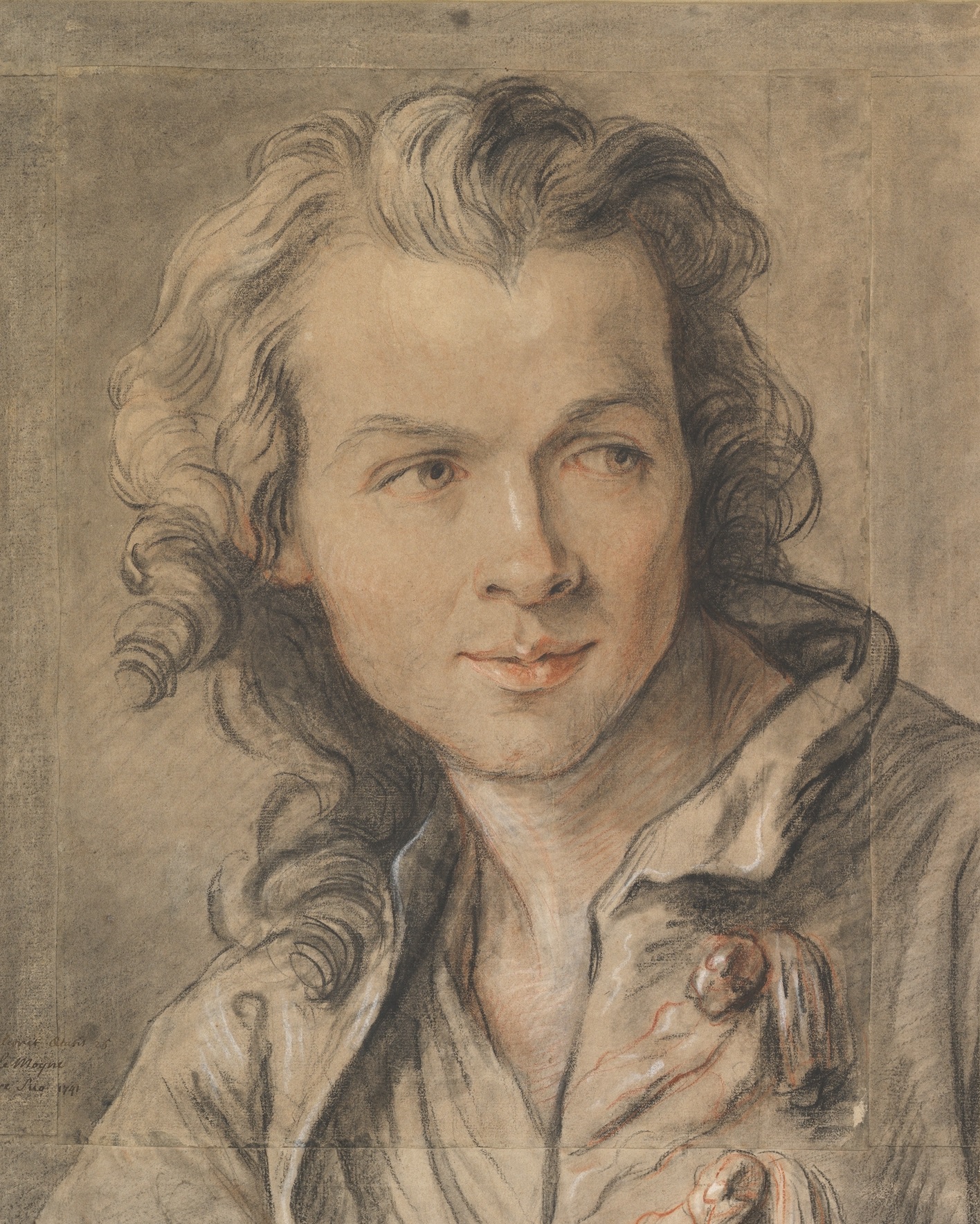
Étienne Maurice Falconet (Étienne Maurice FalconetE-tyen Mo-rees Fal-ko-nayFrench; December 1, 1716 - January 24, 1791) was a prominent French sculptor whose work spanned the Baroque, Rococo, and Neoclassical artistic periods. Born into a financially disadvantaged family in Paris, Falconet rose to international renown, particularly for his monumental equestrian statue of Peter the Great, widely known as the Bronze Horseman, located in St. Petersburg, Russia. His artistic contributions extended beyond large-scale public commissions to include the innovative and influential series of small porcelain figurines he developed during his tenure as director of the sculpture atelier at the Royal Sèvres Porcelain Manufactory. Falconet was also a significant intellectual figure, leaving behind a body of written works and extensive correspondence that reveal his profound insights into art and aesthetics.
2. Life
Étienne Maurice Falconet's life journey reflects a remarkable ascent from humble beginnings to the pinnacle of artistic recognition, marked by influential patrons, significant public commissions, and a dedication to both sculptural practice and theoretical discourse.
2.1. Early Life and Education
Falconet was born on December 1, 1716, in Paris, France, into a poor family. His early years were shaped by financial hardship. He began his artistic journey by first being apprenticed to a marble-cutter. During his leisure hours, he occupied himself by creating figures out of clay and wood. These early artistic endeavors caught the attention of the renowned sculptor Jean-Baptiste Lemoyne, who recognized Falconet's natural talent and took him on as his pupil. This mentorship proved pivotal, providing Falconet with formal training and a pathway into the professional art world.
2.2. Early Career in France
Falconet quickly gained recognition in the Parisian art scene. In 1754, his sculpture of Milo of Croton was particularly successful, securing his admission as a member of the prestigious Académie royale de peinture et de sculpture (Royal Academy of Painting and Sculpture). He gained further public prominence through his exhibitions at the Paris Salons of 1755 and 1757. During these exhibitions, he showcased notable marble works such as L'Amour (Cupid) and Nymphe descendant au bain (Nymph Descending to Bathe), which is also known as The Bather and is now housed in the Louvre Museum.
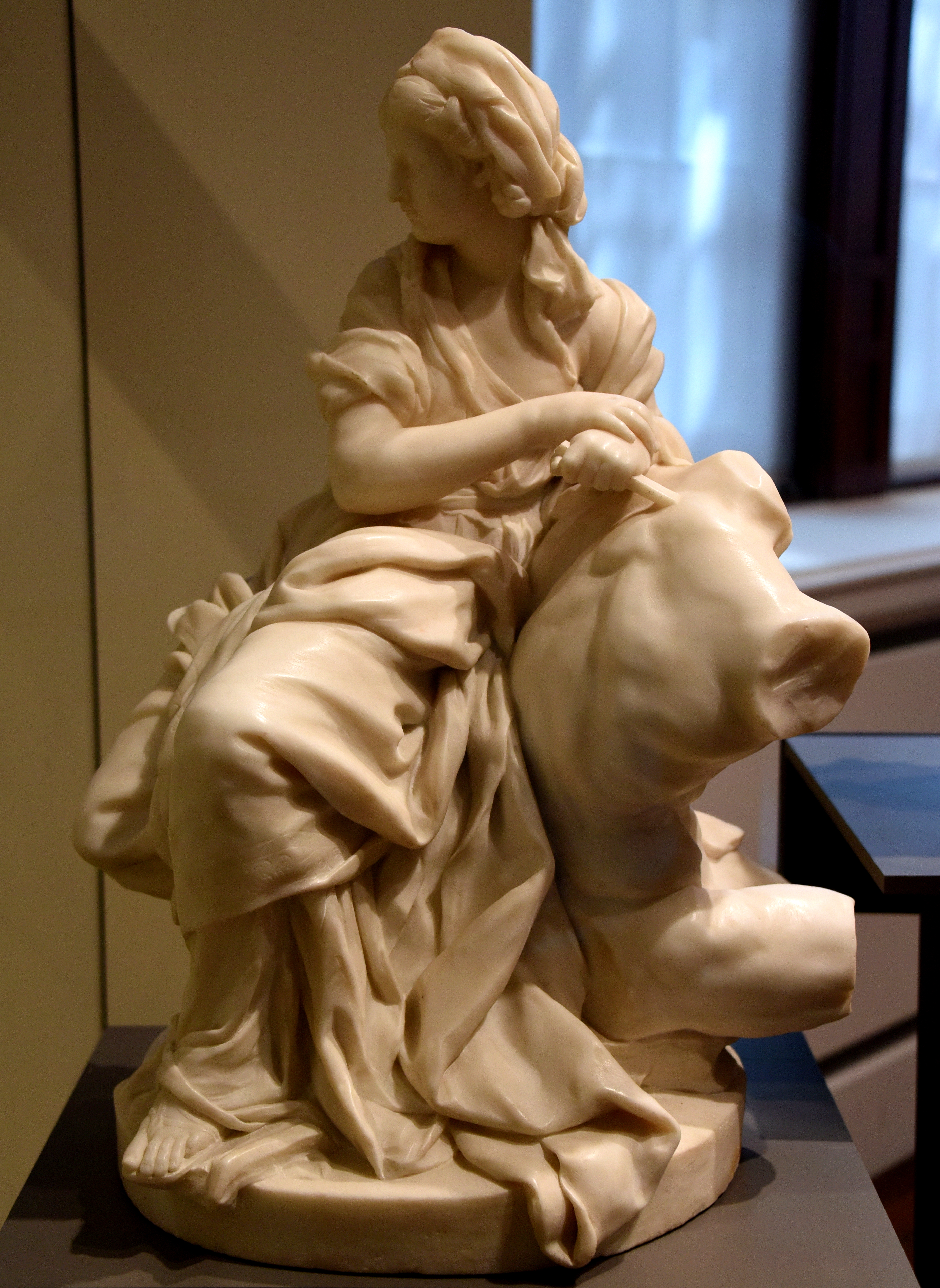
In 1757, Falconet's career took a significant turn when he was appointed by the influential Marquise de Pompadour to serve as the director of the sculpture atelier at the newly established Manufacture royale de porcelaine (Royal Porcelain Manufactory) in Sèvres. At Sèvres, he revolutionized the production of unglazed soft-paste porcelain figurines. This type of small-scale sculpture had been a specialty of the Sèvres manufactory's predecessor, Vincennes. Falconet injected new life into this art form, creating a series of white biscuit porcelain garnitures designed for tabletops. These featured playful figures of putti (known as Falconet's "Enfants") illustrating "the Arts," intended to complement the manufactory's grand dinner service, the "Service du Roy." His innovative approach at Sèvres significantly influenced porcelain manufactories across Europe, spreading the fashion for similar small table sculptures. The influence of the painter François Boucher and contemporary theater and ballet is evident in Falconet's choice of subjects and his distinctively sweet, elegantly erotic, and somewhat coy artistic manner.
2.3. Russian Period: The Bronze Horseman
In September 1766, Falconet received a prestigious invitation from Catherine the Great, the Empress of Russia, prompting him to leave his post at Sèvres. He traveled to St. Petersburg, where he embarked on his most famous and monumental commission: a colossal equestrian statue of Peter the Great. This impressive bronze sculpture, widely known as the Bronze Horseman, was completed in 1782. During this ambitious project, Falconet collaborated closely with his pupil, and later his daughter-in-law, Marie-Anne Collot. Collot played a significant role in creating the head of Peter the Great for the statue.
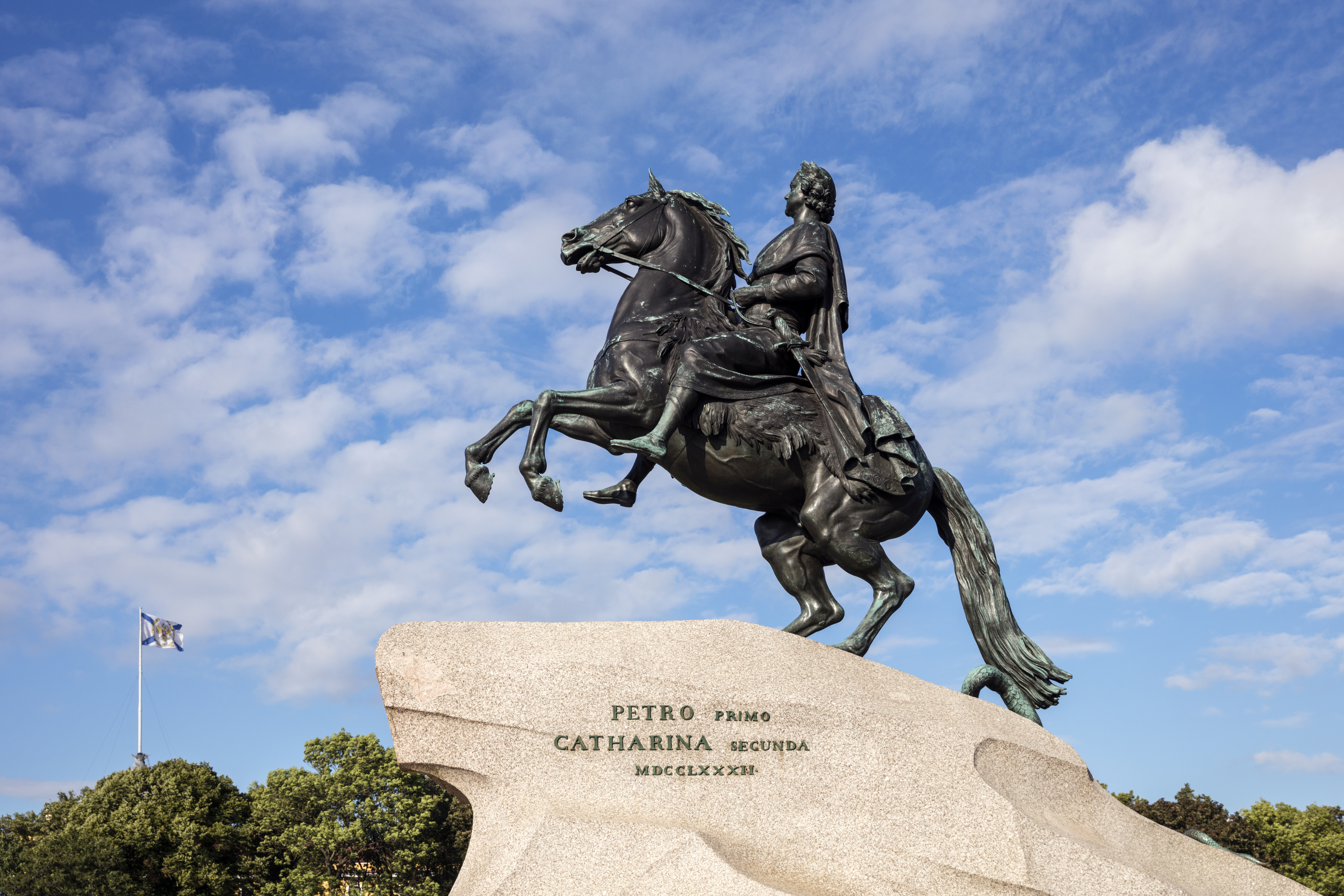
2.4. Later Years and Academic Roles
After his significant period in Russia, Falconet returned to Paris. In 1788, he was appointed Assistant Rector of the Académie royale de peinture et de sculpture, a testament to his continued standing and influence within the French artistic establishment. Despite his return to France, many of Falconet's religious works, which had been commissioned for various churches, were unfortunately destroyed during the tumultuous period of the French Revolution. However, his works created through private commissions generally fared better and survived the revolutionary era.
2.5. Death
Étienne Maurice Falconet passed away on January 24, 1791, in Paris, France, at the age of 74. His death marked the end of a prolific career that profoundly impacted 18th-century European sculpture and decorative arts.
3. Artistic Philosophy and Writings
Beyond his prolific output as a sculptor, Falconet was a profound thinker who actively engaged with the intellectual currents of the Age of Enlightenment. His artistic philosophy and views on aesthetics were articulated through his extensive writings and correspondence, offering invaluable insights into his creative process and the theoretical underpinnings of his art.
3.1. Major Writings
Falconet devoted time to scholarly pursuits, including the study of Greek and Latin. His intellectual engagement is perhaps best exemplified by his contribution to the monumental French Encyclopédie, edited by Denis Diderot and Jean le Rond d'Alembert. Diderot entrusted Falconet with the authorship of the chapter on "Sculpture" for this seminal work. This contribution was later published separately by Falconet in 1768 as Réflexions sur la sculpture (Reflections on Sculpture). Three years later, he published Observations sur la statue de Marc-Aurèle (Observations on the Statue of Marcus Aurelius), an essay that can be interpreted as setting forth the artistic program and theoretical framework for his monumental statue of Peter the Great, the Bronze Horseman. His complete writings on art were collected and published in six volumes under the title Oeuvres littéraires (Literary Works) between 1781 and 1782 in Lausanne.
3.2. Correspondence
Falconet maintained extensive correspondence that sheds light on his artistic beliefs and personal perspectives. His letters to Denis Diderot are particularly notable; in them, Falconet argued that an artist's work springs from an inner necessity and creative drive, rather than solely from the pursuit of future fame or external recognition. His correspondence with Empress Catherine the Great of Russia also provides significant insights into the intricate details of his work on major commissions and his overall philosophical approach to art. These letters collectively form a rich resource for understanding Falconet's intellectual contributions and his place within the broader Enlightenment discourse on art.
4. Major Works
Falconet's artistic output was diverse, encompassing large-scale public monuments, intricate mythological figures, and innovative porcelain creations, each demonstrating his mastery of various materials and forms.
4.1. Large-Scale Sculptures
Among Falconet's most prominent large-scale works is Milo of Croton, a sculpture that played a key role in his admission to the Académie royale de peinture et de sculpture in 1754. His marble work, L'Amour (Cupid), became widely known after its exhibition at the Paris Salon of 1755. Another significant piece is the Nymphe descendant au bain (Nymph Descending to Bathe), also referred to as The Bather, which was exhibited at the 1757 Salon and is now a prized possession of the Louvre Museum.
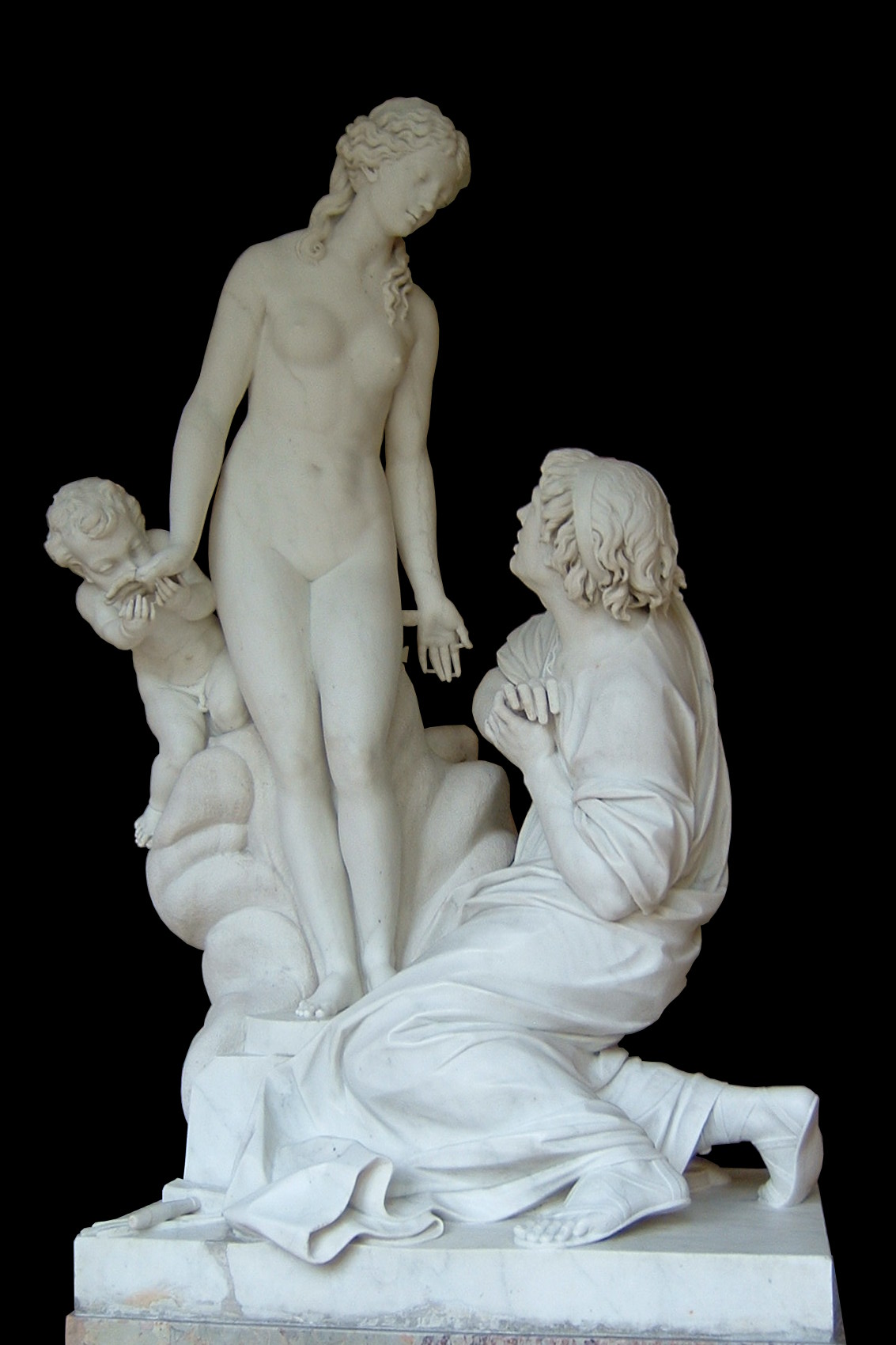
The mythological theme of Pygmalion and Galatee was also brought to life by Falconet in a notable sculpture, depicting the sculptor Pygmalion falling in love with his creation, Galatee. This work showcases his ability to convey emotion and narrative through marble. Perhaps his most iconic large-scale sculpture is the Bronze Horseman, the monumental equestrian statue of Peter the Great in St. Petersburg, Russia. This colossal bronze work, completed in 1782, depicts Peter the Great astride a rearing horse, symbolizing the emperor's dynamic leadership and the rapid modernization of Russia. The sheer scale and technical challenge of this project solidified Falconet's reputation as a master sculptor capable of monumental undertakings.
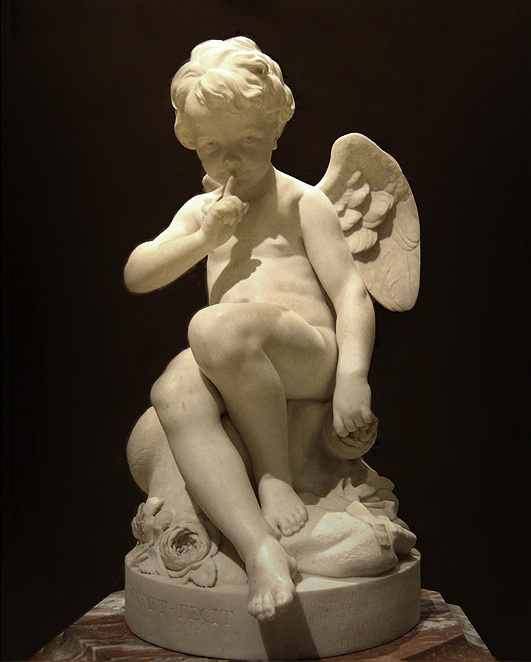
4.2. Sèvres Porcelain Work
Falconet's contributions at the Royal Sèvres Porcelain Manufactory were highly innovative and influential. From 1757 to 1766, as director of the sculpture atelier, he brought a fresh perspective to the creation of unglazed soft-paste porcelain figurines. He specialized in producing small-scale sculptures, particularly the series of white biscuit porcelain putti known as Falconet's "Enfants." These charming figures, often illustrating various "Arts," were designed as tabletop garnitures to complement formal dinner services. The elegant and somewhat whimsical nature of these porcelain works, characterized by their sweet, elegantly erotic, and slightly coy manner, became known as "the art of pleasing." Falconet's distinct style in porcelain production set a new trend that was widely adopted by other porcelain manufactories throughout Europe.
5. Evaluation and Criticism
Étienne Maurice Falconet's art, while celebrated for its charm and elegance, also drew certain criticisms from his contemporaries and later art historians.
5.1. Artistic Characteristics
Falconet's work is frequently characterized by qualities often described as sweet, elegantly erotic, and somewhat coy. These stylistic traits reflect an aesthetic that aimed to capture a sense of refined pleasure and grace, sometimes referred to as "the art of pleasing." This characteristic charm made his porcelain figures and mythological sculptures widely popular, embodying the Rococo sensibilities of his time while hinting at the emerging Neoclassical interest in classical forms. The influence of contemporary theater and ballet is evident in his subjects, which often possess a narrative quality and a lightness of touch.
5.2. Critical Perspectives
Despite his popularity and artistic successes, Falconet's work did not escape critical scrutiny. The Encyclopædia Britannica in its eleventh edition offered a notable critique, stating that his artistic productions were marked by "the same defects as his writings." The critique suggested that while his works demonstrated "considerable cleverness and some power of imagination," they also displayed "a false and fantastic taste," which was attributed to an "excessive striving after originality." This perspective suggests that some critics found his pursuit of distinctiveness to sometimes verge on artificiality or an overemphasis on novelty rather than classical rigor.
6. Personal Life
Details of Étienne Maurice Falconet's private life are not as extensively documented as his professional career, but some information about his family ties exists.
6.1. Family
Falconet had a son named Pierre-Étienne Falconet (1741-1791), who followed in his father's artistic footsteps as a painter, draftsman, and engraver. Pierre-Étienne also contributed to the intellectual projects of his time, notably by providing illustrations for his father's entry on "Sculpture" in Denis Diderot's Encyclopédie. This familial connection highlights a continuation of artistic and intellectual pursuits across generations within the Falconet household.
7. Legacy and Influence
Étienne Maurice Falconet's artistic legacy is multifaceted, spanning his impact on various art forms, the fate of his works through historical upheavals, and their continued presence in notable collections worldwide.
7.1. Impact on Art and Society
Falconet's innovations at the Royal Sèvres Porcelain Manufactory had a lasting impact on porcelain manufacturing across Europe, establishing new standards for unglazed soft-paste porcelain figurines and popularizing the concept of decorative tabletop sculptures. His monumental Bronze Horseman remains one of the most iconic public sculptures in Russia, symbolizing the grandeur of the Russian Empire. However, his religious works faced a less fortunate fate; many commissions for churches were tragically destroyed during the French Revolution, highlighting the vulnerability of art to political and social upheaval. Despite these losses, Falconet's broader artistic legacy endures through his surviving works, which continue to be admired for their technical mastery and distinctive blend of Rococo charm and Neoclassical influences.
7.2. Notable Incidents and Collections
One significant incident connected to Falconet's works involves his sculpture Friendship of the Heart. This piece was notably stolen by Hermann Göring, a high-ranking Nazi official, from the Rothschild collection in Paris. Göring intended it for the art collection at his Carinhall hunting lodge, illustrating how Falconet's art became entangled in the historical events of the 20th century. Today, Falconet's works are held in numerous prominent art collections around the world, including the Louvre Museum in Paris, the Hermitage Museum in St. Petersburg, and the Rijksmuseum in Amsterdam, among others. These collections continue to preserve and display his diverse contributions to sculpture.